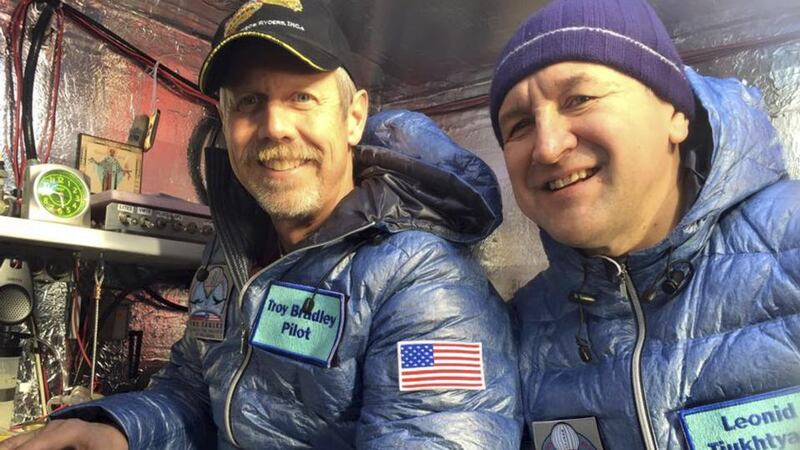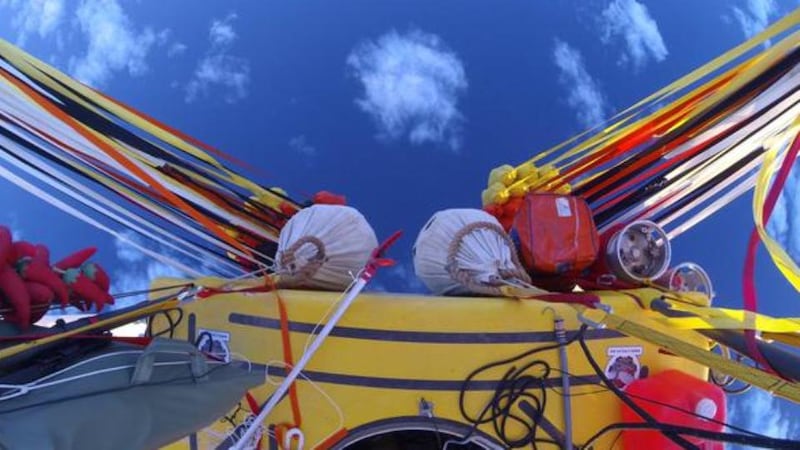Two balloonists crossing over the Pacific Ocean from Japan surpassed a distance record on Thursday for gas-filled balloon travel and are heading toward a landing in Mexico's Baja California in two days, officials said.
American Troy Bradley and Russian Leonid Tiukhtyaev, who are collectively dubbed “Two Eagles”, had travelled more than 8,465 km (5,260 miles) by Thursday afternoon, according to a tracking website set up for their journey.
They have surpassed the distance record of 8,383 km (5,209 miles) for gas balloons, set on the only previous manned trans-Pacific flight, in 1981. The pilots are more than 400 km (250 miles) west-northwest of San Francisco, California.


#TwoEagles Troy & Leonid have just passed the 5209 mile mark. The record of 5208.67 was set by Double Eagle V in 1981 pic.twitter.com/icu9f6ukGl
— Troy Bradley (@TwoEaglesTeam) January 29, 2015When they eclipsed the distance record, a round of applause broke out in the mission control room at the Anderson-Abruzzo Albuquerque International Balloon Museum in New Mexico and people there posed for pictures with the mile counter, said Art Lloyd Jr, a mission support control worker at the site.
The pilots took off on Saturday from Japan and are pursuing a flight duration record of 137 hours aloft set in 1978 by a team crossing the Atlantic. That is expected to happen on Friday morning, Mr Lloyd said.
The pilots are on track to land in Baja California, in Mexico, on Saturday, said officials with the Balloon Museum.
The balloon, which relies solely on an enclosed chamber of helium gas for lift, is different from hot air balloons and so-called Roziere balloons, which rely on both hot air and lighter-than-air gas. Roziere balloons have by far the greatest range of the three types.
Mr Lloyd said the cramped conditions of the capsule has not affected the pilots, who have subsisted on a diet that includes fresh fruit, freeze-dried hikers’ meals, beef jerky and the occasional hot meal from a small stove. They are equipped with cold weather gear including sleeping bags and a heater.
They had earlier taken a track that would have brought them to southwestern Canada, but because of weather changes, they opted for the path toward Mexico, officials said.
Their records must be officially certified by the National Aeronautic Association and the Federation Aeronautique Internationale, which can take months, a mission spokeswoman said.
Balloon enthusiasts can follow the final miles of the pilots' journey using the Two Eagles tracking site.
Reuters









